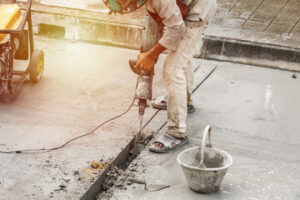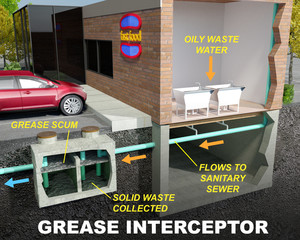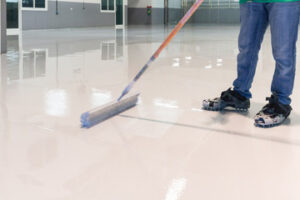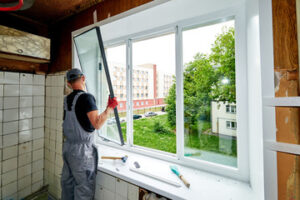Aurora CO Plumbers install, repair and maintain the pipes and fixtures that provide water, waste and heat in residential and commercial structures. They read and interpret blueprints and building codes to determine the best location for pipes, and use specialized tools to unclog drains and fix leaks.
The career requires manual dexterity, attention to detail and interpersonal skills. It also involves working with hazardous materials, including sewage and other contaminants.

Plumbers are responsible for the installation and repair of a range of plumbing fixtures and appliances. This includes toilets, kitchen and bathroom sinks and faucets, bathtubs, showers, water heaters, and more. They also install and repair backflow prevention devices and septic tanks. Plumbing services can be provided both in homes and commercial settings. Plumbers must be knowledgeable about all relevant building codes and regulations. They also need to be able to interpret blueprints and plans. Plumbers often work with construction teams to ensure that the plumbing systems are integrated seamlessly into new buildings.
Plumbers must be familiar with a wide variety of tools and be able to use them effectively. They may need to dig and cut pipes in tight spaces, so they need physical stamina and good manual dexterity. They must be able to identify and diagnose problems based on observations and the information they have received from customers. This can involve using specialized equipment like video cameras to inspect pipes, pressure gauges to test for leaks, and other diagnostic tools.
Some plumbers specialize in specific types of plumbing fixtures and systems. For example, some are experts in installing and repairing dishwashers and garbage disposals. Others may focus on heating, cooling, and ventilation systems. Still others may provide general plumbing maintenance services. These might include replacing washers and gaskets, unclogging drains, and fixing leaks and other minor repairs.
Plumbing companies often offer emergency services as well. This can include responding to calls from homeowners or business owners about clogged drains, low water pressure, or other issues that require immediate attention. These plumbers are often trained in how to quickly and efficiently address these concerns to minimise the disruption to the customer’s life or business.
A high school diploma is typically the minimum educational requirement to become a plumber. Many people obtain their training through an apprenticeship program. These programs last between two and five years and cover all aspects of the job, from learning about the latest equipment and systems to understanding local plumbing codes and regulations. Apprenticeships are usually offered through vocational schools and technical colleges.
Maintenance
Plumbing is a hands-on job that requires physical exertion. It is not recommended for people who suffer from back problems or other chronic conditions. Plumbers are required to wear protective gear including masks, goggles, and gloves when working on pipes or handling dangerous materials. These safety measures are necessary to prevent contact with hazardous materials like toxic chemicals, bacteria, and viruses. It is also essential to maintain proper work area hygiene by cleaning up spills promptly and disposing of trash properly.
Some of the tasks performed by plumbers include repairing broken faucets, toilets, water heaters, and drains. They may also install new fixtures such as sinks, bathtubs, and showers. They also inspect sewer systems and connect them to water supply lines. They may even test for leaks in sewage pipes using a special tool. Plumbers often perform these tasks in residential homes, but they can also be found in large commercial buildings and industrial settings.
Plumbers usually receive on-the-job training through an apprenticeship program, which lasts from four to five years and combines classroom instruction with paid on-the-job training. Those who wish to become plumbers should have at least a high school diploma or equivalent and be able to read blueprints.
There are a few different types of plumbers, each with their own specialty. Licensed residential plumbers are experienced in new installations and repairs of plumbing fixtures such as toilets, showers, and water heaters in single-family homes. They can also handle bigger jobs such as re-piping and whole-house re-wiring.
Licensed commercial plumbers are skilled in installing and maintaining plumbing systems in larger buildings such as offices, malls, and schools. These plumbers are typically required to have more experience in handling larger-scale plumbing projects and may be required to submit to a background check before being hired for these kinds of jobs.
Sanitary plumbers specialize in testing and repairing sewage systems, and they are often required to handle dangerous bacteria and microbes that are excreted from human waste. These bacteria and microbes can cause infections such as cholera, typhoid, hepatitis, and ascariasis. Because of this, sanitary plumbers must use specialized tools to remove and replace contaminated sewage pipes and disinfect the entire plumbing system before it is used again.
Repair
A plumber can fix a variety of plumbing problems. Some common issues include clogged drains, toilets that don’t flush, leaky faucets, and faulty water heaters. Some of these problems can be fixed by homeowners, but it’s best to hire a professional to ensure that the repairs are done correctly and that the home or business is safe.
A skilled plumber can quickly identify and address the problem to prevent further damage. They also have the tools and knowledge to ensure that the repaired system is functioning properly. Plumbers can also handle more complex plumbing issues, such as sewer line repair. Sewer lines can get damaged by tree roots, heavy rains, or freezing temperatures. When this happens, the pipes can clog or break, leading to wastewater backflow and severe property damage. Plumbers can use special cameras to inspect the sewer lines and make the necessary repairs.
Plumbers are trained to understand the physics behind how plumbing systems work. They can troubleshoot and diagnose issues with ease and come up with solutions that are effective, affordable, and durable. Plumbers can also help ensure that all of the work they do complies with local building codes and regulations.
Plumbing is a physically demanding job that requires stamina and strength to lift and maneuver objects. It also requires manual dexterity to work with small parts and pieces. Plumbers need to be detail-oriented and able to think critically in order to solve problems.
In addition to their technical skills, plumbers must have excellent customer service and communication skills. They must be able to listen to their customers’ needs and concerns and explain complicated topics in easy-to-understand terms. They should also be reliable and punctual.
In addition to repairing plumbing problems, plumbers can also assist with installing new fixtures and appliances. They can install garbage disposals, water filters, and even whole-house filtration systems. This can save households money in the long run by reducing their energy consumption. In addition, they can help homeowners avoid costly repairs by identifying and fixing issues before they become serious problems. Some of these issues may be easy to overlook, such as a slow-draining sink or a toilet that constantly runs. However, ignoring them can lead to major problems down the road, such as flooding or sewage backups.
Emergency
If you’re facing a plumbing emergency, you’ll want to call a plumber right away. These professionals can help you fix the problem quickly and effectively, so you can get back to normal in no time. They can also provide preventative maintenance services to keep your plumbing in good condition.
A plumber can diagnose problems with your plumbing by inspecting the entire system. They can use video cameras to check the inside of your pipes and find out what’s causing the problem. They can also test the water pressure to make sure everything is working properly. You should always hire a licensed plumber to perform these tests and inspections.
Typically, an emergency plumber will charge more than a regular plumber. This is because they are available after hours and on weekends, which means that they have a higher cost to cover. If you’re in a pinch, try to find out the estimated cost before hiring them.
Some plumbers have a flat fee for an emergency service, while others charge an hourly rate. When choosing an emergency plumber, it’s important to choose one who will treat your home with respect and not cause damage. You should also make sure that the plumber has a license and insurance to work in your home.
A clogged drain can be a huge hassle and inconvenience for homeowners. It can lead to overflowing toilets, flooding basements, and other issues. You can prevent clogged drains by regularly cleaning your kitchen and bathroom sinks and disposing of trash properly. If you’re facing a blocked drain, contact a local plumber right away for fast and effective service.
Most plumbing emergencies are caused by leaks, but some can be prevented with regular maintenance. Regularly checking your plumbing and addressing any minor issues as soon as they arise can save you a lot of money in the long run. Make sure to install a sump pump in your basement and insulate the pipes in unfinished areas of your house. You should also consider getting a whole-house water filtration system to reduce the risk of water contamination.







